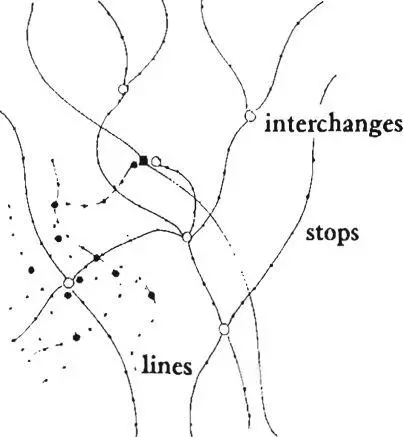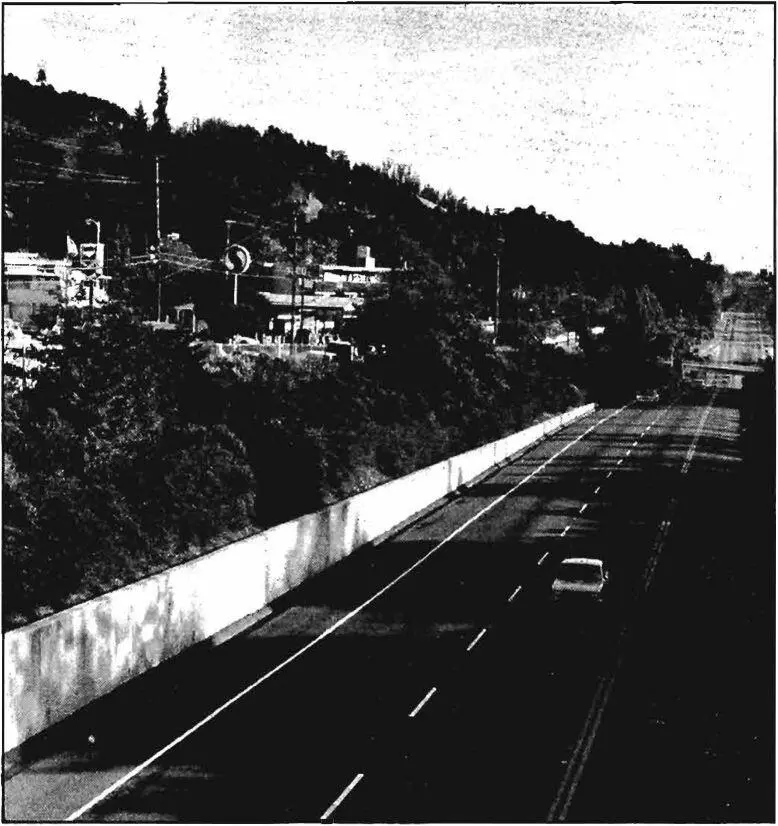Christopher alexander - A pattern language
Здесь есть возможность читать онлайн «Christopher alexander - A pattern language» весь текст электронной книги совершенно бесплатно (целиком полную версию без сокращений). В некоторых случаях можно слушать аудио, скачать через торрент в формате fb2 и присутствует краткое содержание. Жанр: Прочая научная литература, на английском языке. Описание произведения, (предисловие) а так же отзывы посетителей доступны на портале библиотеки ЛибКат.
- Название:A pattern language
- Автор:
- Жанр:
- Год:неизвестен
- ISBN:нет данных
- Рейтинг книги:3 / 5. Голосов: 1
-
Избранное:Добавить в избранное
- Отзывы:
-
Ваша оценка:
- 60
- 1
- 2
- 3
- 4
- 5
A pattern language: краткое содержание, описание и аннотация
Предлагаем к чтению аннотацию, описание, краткое содержание или предисловие (зависит от того, что написал сам автор книги «A pattern language»). Если вы не нашли необходимую информацию о книге — напишите в комментариях, мы постараемся отыскать её.
A pattern language — читать онлайн бесплатно полную книгу (весь текст) целиком
Ниже представлен текст книги, разбитый по страницам. Система сохранения места последней прочитанной страницы, позволяет с удобством читать онлайн бесплатно книгу «A pattern language», без необходимости каждый раз заново искать на чём Вы остановились. Поставьте закладку, и сможете в любой момент перейти на страницу, на которой закончили чтение.
Интервал:
Закладка:
The solution to the web of public transportation, then, hinges on the possibility of solving the coordination problem of the different systems. This is the nut of the matter. We shall now propose a way of solving it. The traditional way of looking at public transportation assumes that lines are primary and that the interchanges needed to connect the lines to one another are secondary. We propose the opposite: namely, that interchanges are primary and that the transport lines are secondary elements which connect the interchanges.
Imagine the following organization: each interchange is run by the community that uses it. The community appoints an interchange chief for every interchange, and gives him a budget, and a directive on service. The interchange chief coordinates the service at his interchange; he charters service from any number of transport companies—the companies, themselves, are in free competition with one another to create service.
In this scheme, responsibility for public transportation shifts from lines to interchanges. The interchanges are responsible for connecting themselves to each other, and the community which
uses the interchange decides what kinds of service they want to have passing through it. It is then up to the interchange chief to persuade these transport modes to pass through it.
Slowly, a service connecting interchanges will build up. One example which closely follows our model, and shows that this model is capable of producing a higher level of service than any centralized agency can produce, is the famous Swiss Railway System.
The Swiss railway system ... is the densest network in the world. At great cost and with great trouble, it has been made to serve the needs of the smallest localities and most remote valleys, not as a paying proposition but because such was the will of the people. It is the outcome of fierce political struggles. In the 19th century, the “democratic railway movement’’ brought the small Swiss communities into conflict with the big towns, which had plans for centralisation. . . . And if we compare the Swiss system with the French which, with admirable geometrical regularity, is entirely centered on Paris so that the prosperities or the decline, the life or death of whole regions has depended on the quality of the link with the capital, we see the difference between a centralised state and a federal alliance. The railway map is the easiest to read at a glance, but let us now superimpose on it another showing economic activity and the movement of population. The distribution of industrial activity all over Switzerland, even in the outlying areas, accounts for the strength and stability of the social structure of the country and prevented those horrible 19th century concentrations of industry, with their slums and rootless proletariat. (Colin Ward, “The Organization of Anarchy,” in Patterns of Anarchy , by Leonard I. Krimerman and Lewis Perry, New York, 1966.)
Therefore:
Treat interchanges as primary and transportation lines as secondary. Create incentives so that all the different modes of public transportation—airplanes, helicopters, ferries, boats, trains, rapid transit, buses, mini-buses, ski-lifts, escalators, travelators, elevators—plan their lines to connect the interchanges, with the hope that gradually many different lines, of many different types, will meet at every interchange.
Give the local communities control over their interchanges so that they can implement the pattern by giving
I 6 WEBOF PUBLICTRANSPORTATION
contracts only to those transportation companies which are willing to serve these interchanges.
 |
| *£♦ A ^4 |
Keep all the various lines that converge on a single interchange, and their parking, within 600 feet, so that people can transfer on foot— interchange(34). It is essential that the major stations be served by a good feeder system, so people are not forced to use private cars at all— mini-buses (20). . . .
A PATTERN LANGUAGE
want to solve the problem. In this sense, we have tried, in each solution, to capture the invariant property common to all places which succeed in solving the problem.
But of course, we have not always succeeded. The solutions we have given to these problems vary in significance. Some are more true, more profound, more certain, than others. To show this clearly we have marked every pattern, in the text itself, with two asterisks, or one asterisk, or no asterisks.
In the patterns marked with two asterisks, we believe that we have succeeded in stating a true invariant: in short, that the solution we have stated summarizes a froferty common to all possible ways of solving the stated problem. In these two-asterisk cases we believe, in short, that it is not possible to solve the stated problem properly, without shaping the environment in one way or another according to the pattern that we have given—and that, in these cases, the pattern describes a deep and inescapable property of a well-formed environment.
In the patterns marked with one asterisk, we believe that we have made some progress towards identifying such an invariant: but that with careful work it will certainly be possible to improve on the solution. In these cases, we believe it would be wise for you to treat the pattern with a certain amount of disrespect—and that you seek out variants of the solution which we have given, since there are almost certainly possible ranges of solutions which are not covered by what we have written.
Finally, in the patterns without an asterisk, we are certain that we have not succeeded in defining a true
XIV
| 17 RING ROADS |
|---|
 |
96
. . . the ring roads which this pattern specifies, help to define and generate the local transport areas (ii);if they are placed to make connections between interchanges(34), they also help to form the web of public transportation(16).
❖ -h
It is not possible to avoid the need for high speed roads in modern society; but it is essential to place them and build them in such a way that they do not destroy communities or countryside.
Even though the rush of freeways and superhighways built in the I950’s and 1960’s is slowing down, because of widespread local protest, we cannot avoid high speed roads altogether. There is, at present, no prospect for a viable alternative which can provide for the vast volume of movement of cars and trucks and buses which a modern city lives on economically and socially.
At the same time, however, high speed roads do enormous damage when they are badly placed. They slice communities in half; they cut off waterfronts; they cut off access to the countryside; and, above all, they create enormous noise. For hundreds of yards, even a mile or two, the noise of every superhighway roars in the background.
To resolve these obvious dilemmas that come with the location and construction of high speed roads, we must find ways of building and locating these roads, so that they do not destroy communities and shatter life with their noise. We can give three requirements that, we believe, go to the heart of this policy:
Читать дальшеИнтервал:
Закладка:
Похожие книги на «A pattern language»
Представляем Вашему вниманию похожие книги на «A pattern language» списком для выбора. Мы отобрали схожую по названию и смыслу литературу в надежде предоставить читателям больше вариантов отыскать новые, интересные, ещё непрочитанные произведения.
Обсуждение, отзывы о книге «A pattern language» и просто собственные мнения читателей. Оставьте ваши комментарии, напишите, что Вы думаете о произведении, его смысле или главных героях. Укажите что конкретно понравилось, а что нет, и почему Вы так считаете.












